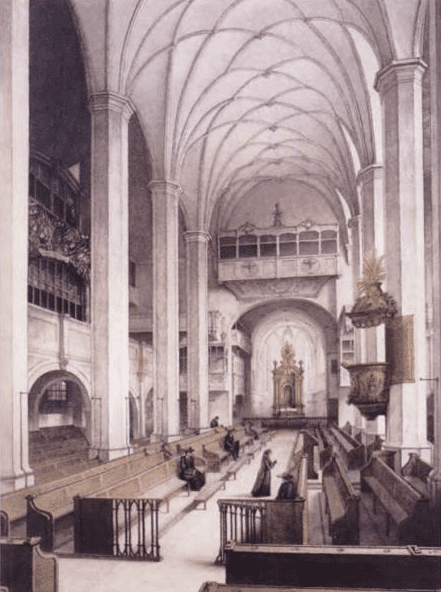Cantata text anonymous | Movements 6 | |
 | ||
Liebster Immanuel, Herzog der Frommen (Dearest Emmanuel, duke of the pious), BWV 123, is a church cantata by Johann Sebastian Bach. He composed the chorale cantata in Leipzig for Epiphany and first performed it on 6 January 1725. It is based on the hymn by Ahasverus Fritsch (1679).
Contents
History and words
Bach wrote the chorale cantata in his second year in Leipzig to conclude a set of Christmas cantatas on the Feast of Epiphany. The prescribed readings for the feast day were taken from the Book of Isaiah, the heathen will convert (Isaiah 60:1–6), and from the Gospel of Matthew, the Wise Men From the East bringing gifts of gold, frankincense and myrrh to the newborn Jesus (Matthew 2:1–12). The cantata text is based on the chorale in six stanzas by Ahasverus Fritsch (1679). The unknown poet kept the first and the last stanza, and paraphrased the inner stanzas to a sequence of as many recitatives and arias. The text has no specific reference to the readings, but mentions the term Jesusname (name of Jesus), reminiscent of the naming of Jesus celebrated on 1 January. The poet inserts "Heil und Licht" (salvation and light) as a likely reference to the Epiphany, and alludes to Christmas by "Jesus, der ins Fleisch gekommen" (Jesus who came into flesh). Otherwise the cantata text follows the idea of the chorale: hate and rejection in the world cannot harm those who believe.
Bach first performed the cantata on 6 January 1725.
Scoring and structure
The cantata in six movements is scored for three vocal soloists (alto, tenor, and bass), a four-part choir, two flauto traverso, two oboes d'amore, two violins, viola, and basso continuo.
- Chorus: Liebster Immanuel, Herzog der Frommen
- Recitative (alto): Die Himmelssüßigkeit, der Auserwählten Lust
- Aria (tenor): Auch die harte Kreuzesreise
- Recitative (bass): Kein Höllenfeind kann mich verschlingen
- Aria (bass): Laß, o Welt, mich aus Verachtung
- Chorale: Drum fahrt nur immer hin, ihr Eitelkeiten
Music
In the opening chorus Bach uses the beginning of the chorale melody as an instrumental motif, first in a long introduction, then as a counterpoint to the voices. The soprano sings the cantus firmus. The lower voices are set mostly in homophony with two exceptions. The text "Komme nur bald" (come soon) is rendered by many calls in the lower voices. The text of the final line is first sung by the bass on the melody of the first line, which alto and tenor imitate to the soprano singing the text on the melody of the last line, thus achieving a connection of beginning and end of the movement. The prominent woodwinds, two flutes and two oboes d'amore, and the 9/8 time create a pastoral mood.
The tenor aria, accompanied by two oboes d'amore, speaks of "harte Kreuzesreise" (harsh journey of the Cross), illustrated by a chromatic ritornello of four measures in constant modulation. Christoph Wolff terms the material "bizarre chromatic melodic figures". When the ritornello appears again at the end of the first section, it is calmer in the melodies, with the chromatic theme in the continuo, perhaps because the singer claims he is not frightened. In the middle section, thunderstorms are pictured "allegro" in "exuberant passage-work" of the voice, calming to "adagio" on "Heil und Licht", the reference to the Epiphany.
The bass aria is termed by John Eliot Gardiner, who performed the cantata on the Bach Cantata Pilgrimage in the Nikolaikirche in Leipzig, as "one of the loneliest arias Bach ever wrote". The voice is only accompanied by a single flute and a "staccato" continuo. Gardiner compares the flute to "some consoling guardian angel".
The cantata is closed by an unusual four-part chorale. The Abgesang of the bar form is repeated, the repeat marked piano. The reason is likely the text which ends "bis man mich einsten legt ins Grab hinein" (until one day I am laid in the grave). Alfred Dürr notes such soft endings also in Bach's early cantatas Gottes Zeit ist die allerbeste Zeit, BWV 106, and Gott, wie dein Name, so ist auch dein Ruhm, BWV 171, but also in Also hat Gott die Welt geliebt, BWV 68.
